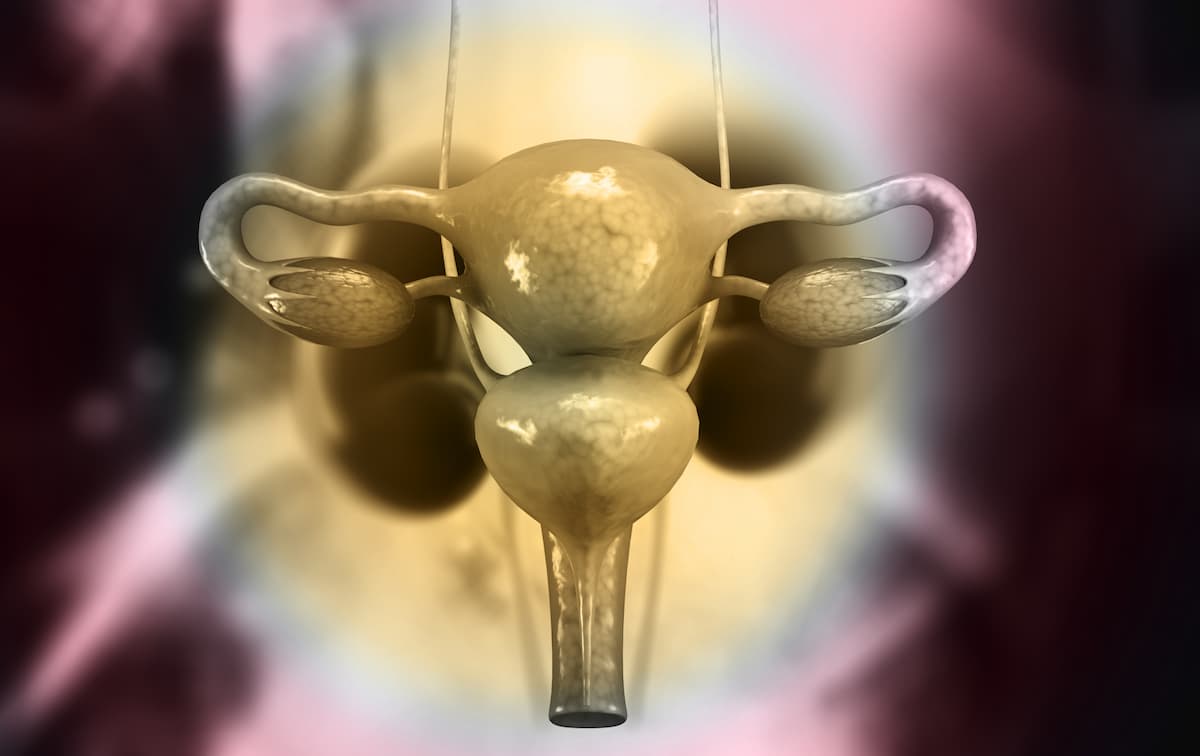Real-World Niraparib Efficacy Similar to Phase 3 Data in Ovarian Cancer
The median PFS for patients with ovarian cancer who received niraparib maintenance in the real-world setting was 25.7 months.
The median PFS for patients with ovarian cancer who received niraparib maintenance in the real-world setting was 25.7 months.

Niraparib (Zejula) maintenance was effective and well-tolerated in patients with newly diagnosed advanced ovarian cancer who were treated in real-world settings, according to results from a single-center, retrospective study published in OncoTargets and Therapy.
With a data maturity of 39.2% and a median follow-up for progression-free survival (PFS) of 21.4 months (IQR, 20.4-22.5), the overall median PFS was 25.7 months (95% CI, 17.7-not available) and the 24-month PFS probability was 51.87%.
By subgroup, in patients with BRCA mutation, the median PFS was not reached (NR; 95% CI, not estimable [NE]-NE) and the 24-month PFS probability was 85.6%; in patients with BRCA wild-type, the median PFS was 23.0 months (95% CI, 15.16-30.84) and the 24-month PFS probability was 46.2%; and in patients with BRCA untested, the median PFS was 15.5 months (95% CI, 4.9-26.1) with a 24-month PFS probability of 40.7%.
In patients with homologous recombination deficiency, the median PFS was NR (95% CI, NE-NE) compared with 23.0 months (95% CI, 2.62-43.38) in patients with homologous recombination proficiency. In patients untested for homologous recombination, the median PFS was 17.5 months (95% CI, 6.61-28.39).
A univariate analysis of the BRCA wild-type population was conducted because it is typically associated with a poorer prognosis. Notably, the number of platinum-based chemotherapy cycles may have been an independent prognostic factor (P = .0128). Other analyzed factors included FIGO stage IV or not (P = .5812), KELIM score lower than 1 or not (P = .8145), postoperative status of cytoreductive surgery at R0 vs R1 or R2 (P = .5913), best response to platinum-based chemotherapy being a complete response vs partial response (P = .6768), and receipt of HIPEC (P = .5897).
“Maintenance therapy with niraparib for newly diagnosed advanced ovarian cancer is effective and well-tolerated, without any safety concerns,” wrote lead study author Wenxin Liu, of the Department of Gynecological Oncology at Tianjin Medical University Cancer Institute and Hospital and National Clinical Research Center for Cancer at State Key Laboratory of Cancer Prevention and Therapy of Tianjin of Tianjin’s Clinical Research Center for Cancer, in Tianjin, China, and coauthors in the publication. “For the BRCA wild-type population, the completion of full-course chemotherapy should be given greater emphasis, and a few more cycles of chemotherapy should be feasible.”
A total of 102 patients with histologically confirmed epithelial ovarian cancer, fallopian tube cancer, and primary peritoneal cancer who received niraparib as first-line maintenance treatment at Tianjin Cancer Hospital between January 2021 and January 2023 were enrolled in the trial. Those with missing clinical data due to loss or refusal to follow up were excluded from participation.
The median patient age was 58 years, 84.3% had FIGO stage III/IV disease, 53.9% received neoadjuvant chemotherapy, and 37.3% had a partial response to platinum-based chemotherapy. BRCA mutation was observed in 18.6% of patients, BRCA wild-type was observed in 58.8%, and BRCA was untested for in 22.5%; homologous recombination deficiency was observed in 36.3%, homologous recombination proficiency was observed in 12.7%, and the remaining 51% were not tested for homologous recombination status.
Evaluated outcomes included PFS per RECIST v1.1 and safety per CTCAE v5.0.
Regarding safety, any-grade treatment-emergent adverse events (TEAEs) occurred in 78.4% of patients, with 20.6% experiencing a TEAE of grade 3 or higher. Treatment was interrupted in 39.2% of patients, and 37.3% experienced a dose reduction; 6.9% of patients discontinued treatment because of TEAEs. The most common hematological TEAEs were anemia and decreased platelet count, decreased neutrophil count, and decreased white blood cell count; the most common non-hematological TEAEs were nausea, decreased appetite, and fatigue.
Reference
Liu W, Zhang L, Wu H, et al. Real-world experience of niraparib as maintenance therapy in patients with newly diagnosed advanced ovarian cancer: a single-center retrospective study. Onco Targets Ther. 2025;18:1201-1208. doi:10.2147/OTT.S528382